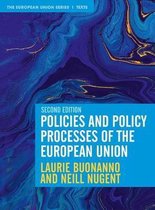Samenvatting
European Union (EU) Politics - Extensive Summary
- Instelling
- Maastricht University (UM)
Deze samenvatting bevat alle noodzakelijke basis informatie + diepgaandere informatie over de EU, haar historie, haar instituties en de toekomst ervan. This comprehensive summary consists of all necessary information on the EU: its history, its institutions and its future. EU European Union...
[Meer zien]





